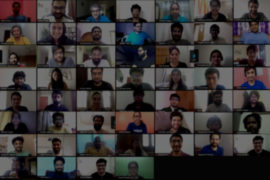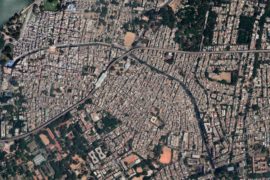The Most Polluted City On Earth
Delhi is one of the largest and fastest growing cities on the planet. Home to over 24 million people, one of the unifying challenges for this huge and diverse population is also one of the most basic necessities for life: clean air. Delhi was recently granted the dubious title of the “World’s Most Polluted City” by the World Health Organization.
Air pollution has major health consequences for those living in heavily polluted areas. High levels of particulates and hazardous gases can increase the risk of heart disease, asthma, bronchitis, cancer, and more. The WHO estimates that there are 7 million premature deaths linked to air pollution every year, and the Union Environment Ministry estimates that 80 people die every day from air pollution in Delhi.
Air Pollution Sensors + Auto Rickshaws
Traditional particulate matter measurement devices use very advanced scales and filters to measure the exact mass of ambient particles below a certain size. As such, these devices are prohibitively expensive (₹1.1 crore or $165,000) and fixed in a single location.
We took a different approach.
Auto rickshaws are a very popular source of transportation in Delhi. Popularly called “autos”, these vehicles can be found all over Delhi at all times of day and night, making them an ideal place to deploy our sensors. Unlike traditional air quality readings that sample from one location repeatedly, the sensors deployed for this project sample data for air pollution in Delhi directly from traffic jams, markets, and residential neighborhoods all over the city.
The Internet of (Air Pollution Monitoring) Things
We have developed a custom internet-connected device to attach to take pollution readings from autos. Each device contains an airborne particle sensor, a GPS unit, and a cellular antenna to send the data over 2g networks in real time; we were able to construct each device for about ₹6,500 ($100) each. The greater mobility and reduced cost of these devices comes at a cost: the particle sensor we are using is less accurate than those used by traditional pollution monitors. The reason is that our sensor determines the number of airborne particles by reading the ambient air opaqueness, instead of measuring the precise mass of the collected particles.
Our solution for this drop in precision is to increase the sample size. A lot.
Each device takes two readings per minute. With five devices deployed, the pollution reading for each hour is an average of 600 data points, and the AQI for each day is calculated from almost 15,000 distinct readings. The up-time for each device is not 100%, as the auto-rickshaw drivers generally drive for 12 hours per day, and we are not always able to transfer the device to another auto driver between shifts. However, the resulting data has still proven sufficient for our experimental purposes.
Moving Forward Against Air Pollution in Delhi
We released a real-time dashboard to share the data from this pilot project publicly. In the coming weeks, we will be releasing more detailed analyses of the data, such as a comparison of the average air pollution in Delhi across different neighborhoods, a breakdown of pollution at different times of day, and an examination of what we can learn about auto-rickshaw routines from the data.
This experiment could be deployed at a greater scale in the future, with 100 sensors deployed across a city, for example. The base cost of the required hardware would still be considerably less than acquiring the traditional equipment used to measure air pollution. With 100 sensors deployed, the average pollution level for each day could be calculated from over 250,000 individual readings, and the sensors could be deployed to a wider area of the city.
New technological capabilities enabled by the Internet of Things have the potential to transform how we assess, and alleviate, some of the world’s most pressing problems.
New technological capabilities enabled by the Internet of Things have the potential to transform how we assess and alleviate some of the world’s most pressing problems. By further developing and refining these low-cost air pollution sensors, we hope to establish a sustainable model for collecting relevant and detailed public health data in hard-to-reach areas. By applying similar techniques to other pressing issues such as water scarcity, energy conservation, waste management, and more, we aim to become a leader in pioneering new IoT-based decision-making solutions.
To read more about how we built our IoT devices and what engineering challenges we faced, check out our follow-up blog: How We Built Our IoT Devices to Track Air Pollution in Delhi








2 Comments
Fantastic project! That´s creativity in action for Internet of Things. All Best Wishes
We are Atlanta Healthcare, Air Quality Management company, We would like to speak with you in regards to air quality management solutions so kindly share your details else write to us at customer [email protected]